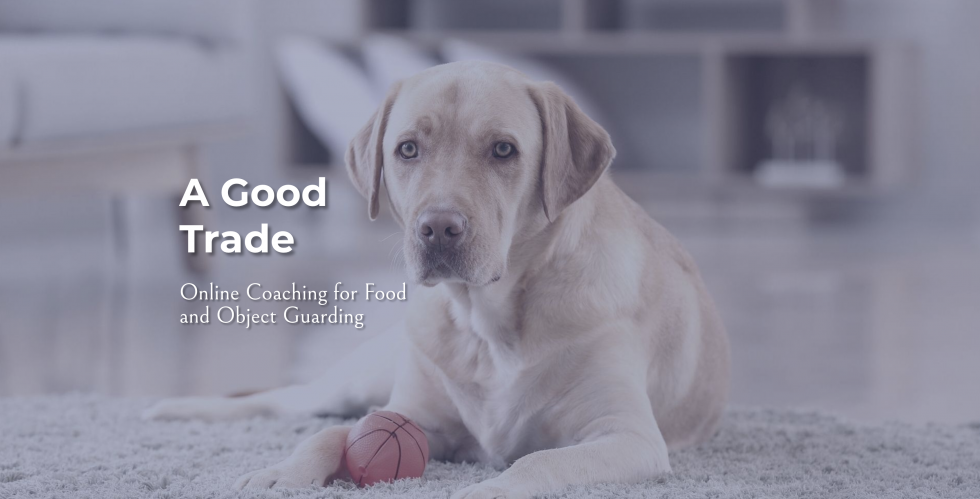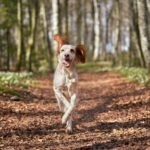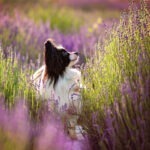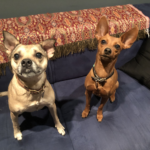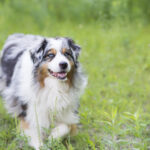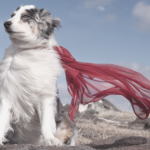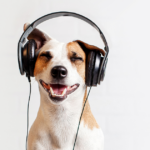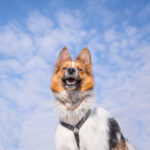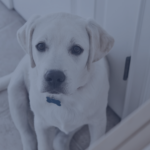The look of astonishment on my client’s face wasn’t unusual. Her dog had a history of growling, snarling and biting if anyone came near when he was chewing his favorite bone. And she had in fact just walked up to him while he was chewing on this coveted bone. But guess what? When she approached, he looked up with a waggy tail and happy face, with no signs of tension at all. It was that “Yay, where’s my fabulous snack?!?!” look indicating the positive conditioned emotional response we’d been working towards.
For the past few weeks, I’d been coaching her through all the important details of object exchanges. I’d demonstrate the current step of the training plan, then watch closely as she practiced the step with her dog. I did any necessary troubleshooting and adjusted the training plan as we moved along. I taught her how to observe her dog’s body language and make decisions about whether to move forward with the plan or take a step back. She diligently completed her homework each week. And then, this moment. This moment is always special.
Now that many dog trainers have moved some or all of their services online, we are often asked if challenging problem types like object guarding or stranger fear can be effectively addressed in the online format. That special moment I just described? It happened in a virtual session.
Food and object guarding are problem types that mesh especially well with online sessions. And I’ll let you in on a little secret: virtual sessions aren’t really that different from in-person sessions. In both formats, I gather relevant details about the dog and the history of the problem behavior and I provide education about the behavior. In the case of food and object guarding, that includes the information that guarding is normal dog behavior — growling, snarling, snapping and biting are part of how dogs communicate, “Hey, that’s mine!” I help owners set themselves and their dog up for success by arranging the environment to prevent problems and make preferred behaviors more likely. (Pick those shoes up so your dog doesn’t have an opportunity to snatch them up.) I discuss options for providing physical exercise and mental enrichment, and how to do that safely with dogs who guard chews, Kongs or other enrichment objects. And, just as with in-person sessions, I coach guardians through step-by-step training programs while they do the hands-on work with their dog.
I’ll let you in on a little secret: virtual sessions aren’t really that different from in-person sessions.
That said, there are some differences in how I approach food and object guarding in online sessions.
Many people are already familiar with Zoom or other video conferencing platforms, but they aren’t used to the angles we need for dog training. As a trainer and behavior consultant, it’s critical to be adept at reading dog body language and coaching dog guardians to recognize signs of discomfort, especially those that might be less obvious like slight freezes. If we start to see signs of discomfort, we stop and adjust what we’re doing. That means we need a good view of the dog and of other relevant features in the environment, such as the owner’s proximity to the dog.
Multiple devices on the owner’s end can provide additional angles or views. It’s often helpful to have a wide view, with the dog and guardian both visible, and a close-up — Mr. Demille, I’m ready — view of the dog. It usually takes just a few minutes to adjust lighting and camera placement for a good view of the dog and owner, as well as small adjustments during the session as needed.
In addition to coaching my clients live during Zoom sessions, I also ask for video recordings of training sessions. Video recordings provide a wonderful opportunity for additional feedback, as well as review for anything that might have missed in real-time. If I’m unsure, I can go back and look again. Was that a clear positive conditioned emotional response, happy anticipation of the generous bonus about to come? Did the guardian remember to approach first, then reach for the treats? Yes, it is time to upgrade to steak.” It also gives me a chance to point out details of the dog’s body language, like I do in live sessions. See right here, that’s a good example of a freeze. There are plenty of free and subscription products that allow me to offer comments on video recordings via time-stamped text or voice over. (Frame.io and loom are my current go-tos!)
Video recordings provide a wonderful opportunity for additional feedback, as well as review for anything that might have missed in real-time. If I’m unsure, I can go back and look again.
Like a driving instructor who is attuned to both the student driver and everything else around like other cars and pedestrians, I have to remain sharp-eyed and agile.
Safety First
I’m teaching the guardian who in turn is teaching the dog. I’m attending to both learners, adjusting course based on feedback from both. Like a driving instructor who is attuned to both the student driver and everything else around like other cars and pedestrians, I have to remain sharp-eyed and agile. And like that driving instructor, I want a second brake in case of emergencies.
I will never purposefully put the dog in a situation where I might need to use that second brake. If there’s even slight signs of discomfort or guarding, I immediately stop and drop back to an easier version of the exercise. I hope to never need to use the second brake — or seat belts or air bags. Those safety features don’t give us an excuse to drive recklessly and put ourselves or others in danger, but they can mitigate the damage if something goes wrong.
So, what is that second brake when working with food and object guarding? It’s muzzles, tethers, gates and/or exercise pens, particularly when working with dogs who give few or no warnings or have a history of hard bites. Those safety elements can add a bit more work (see efficiency below), particularly if using a muzzle, since we must teach the dog to be comfortable with these items first. And we’ll later have to repeat the training with those safety elements removed. For extra safety — remember I’m far away at the other end of a computer network — I might advise two safety nets such as a tether and a muzzle.
Clients need to know what to do in advance in case of a lost connection or delay. For guarding cases, this is often simply to stop, move away from the dog and wait for the connection to return.
Splitty vs Lickety-Split
For training success and safety, we always start with what’s safe and what the dog can do right now. We change the context as much as needed to find the best starting place for an individual dog; whatever is needed so there’s no sign of guarding at all. “A version of the problem that isn’t a problem,” as Jean Donaldson says. Fido guards his empty food bowl? No problem, we can start with a new bowl, or a plate, or plate in a new location. With object guarding, we start with a “dummy” object, something the dog isn’t much interested in and has never guarded. This way, the guardian can safely practice the skills and work out any kinks, and the dog learns to play the game, too. They learn to parallel park with cones before trying with actual cars.
From there, we progress in steps that are as splitty (or teeny-tiny) as needed for effective training, safety and comfort of the guardian. Because I’m very aware that nobody has infinite energy, time and money, I want to make the training as efficient as possible without comprising safety or effectiveness. But for safety reasons, in online training, I tend to be splittier than in-person.
A Good Trade
There are some aspects of in-person sessions that I miss. I can’t demonstrate with the actual dog (instead I use my dog, a fake dog or videos), and I can’t give the dog a head-start on the training during consultations — a skilled professional is a more effective and efficient trainer than the average person. I can’t be another person to go through the plan to help the dog generalize approach-predicts-fabulous-treats to additional people. I can’t fix technical issues like time lags, slow or lost connections, poor lighting or unclear pictures. And I can’t accept sloppy kisses from my clients’ amazing dogs. Overall, though, the pros of virtual coaching far outweigh the cons when it comes to helping my clients resolve food and object guarding. I’m opting into online sessions, just as a dog might opt in for steak in exchange for his favorite chew. It’s a good trade.
Jessica Ring strives to provide the most effective, efficient, humane and up-to-date solutions for her clients’ dog training needs through her company, My Fantastic Friend. Jessica is a Certified Professional Dog Trainer (CPDT-KA) through the Certification Council for Professional Dog Trainers and a Professional Canine Behavior Consultant – Accredited (PCBC-A) through the Pet Professional Accreditation Board. She is an honors graduate of Jean Donaldson’s Academy for Dog Trainers, a rigorous program known as the Harvard of dog training, earning her Certificate in Training and Counseling (CTC). Jessica studied with separation anxiety specialist Julie Naismith to earn her SA Pro Training Certificate. She also studied under world-renowned author and trainer Pat Miller at Peaceable Paws Academy, becoming a Pat Miller Certified Trainer (PMCT). She successfully completed Dr. Susan Friedman’s course Living and Learning with Animals: The Science and Technology of Behavior Change. As a Fear Free Certified Professional, Jessica is committed to preventing and alleviating fear, anxiety and stress in pets. Because she is devoted to continuing education and professional development, she regularly attends workshops and seminars. Furthermore, Jessica has 15 years of teaching experience as a graphic design professor at the university level.
